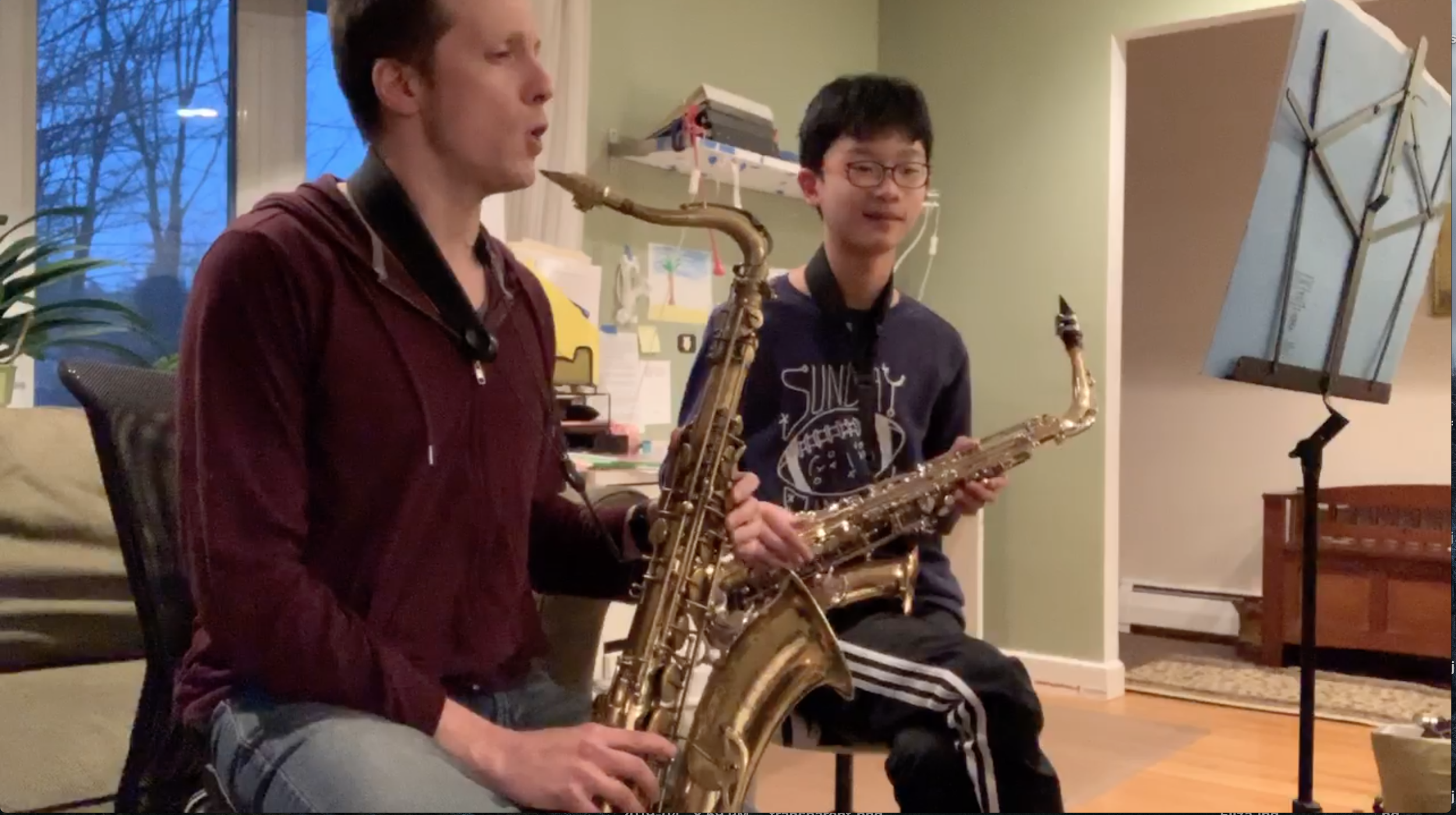Saxophone, Clarinet, and Flute
Saxophone was my first musical instrument and perhaps the one closest to my heart. I am first, foremost, and forever a saxophone player; I’ve always loved playing it, and always will! Later in my life I discovered that the clarinet and flute have a lot in common with the saxophone, and that much of my skills transferred readily to these instruments. I enthusiastically set about exploring these new branches of the woodwind family tree. Each has a unique tonal character and emotional impact, and learning to play all three greatly expanded the scope of my technique and creativity. Woodwinds are immensely versatile; they can sing and scream, soothe and soar in equal measure. To play one is to partake of a wondrous alchemical reaction that transforms the air you breathe into sound and color.
This thing right here. My favorite thing to do. Let me teach you to do it too!
Marchin’ and flutin’ for climate awareness.
Pros
I know I’m a little biased, but woodwinds are, quite simply, a delight. Powering and controlling an instrument with your breathing gives you a feeling of oneness with it you just won’t get from anything else. In many ways, it feels a lot like singing, but with a new and compelling voice that will allow you to express things that words never could.
Woodwinds aren’t always front and center in the songs we hear, but they have a long and illustrious history in Western music. They have a place in classical, jazz, rock and roll, funk, soul, hip-hop, Rn’B, and these days they’ve even had a resurgence in dance and electronic music!
Woodwind instruments are nearly always welcome in school band and community ensembles. Young and old students alike generally have no trouble finding a group to play with.
When it comes to woodwinds, learning one is more like learning three! Saxophone, clarinet, and flute all utilize common techniques like tonguing, slurring, breath support, and dynamics. Moreover, a lot of the fingerings for the notes are the same! This isn’t always the case, but in general if you can play a note on one of these instruments, there’s a good chance you’ll be able to play it on the other two as well. Learn to play all three and you’ll be a musical triple threat.
Cons
Woodwinds are typically more expensive than other instruments. A $300 guitar will sound pretty good; a $300 saxophone doesn’t exist. There is, however, a huge range of models for different budgets, and because they’re so popular in school bands, there are a number of instrument rental companies out there that will lease you a woodwind for an affordable monthly payment.
Woodwinds are monophonic, meaning they only play one note at a time. There’s nothing inherently wrong with that, but it’s not ideal for learning musical fundamentals. They’re also used almost exclusively as melodic instruments, with very little emphasis on rhythm (though there are exceptions!). Polyphonic and percussive instruments like piano, drums, and guitar will give beginning musicians a much stronger foundation in rhythm, harmony, and counterpoint.
In some ways they’re harder to play than piano or guitar. Playing a woodwind requires developing proper embouchure, a fancy French word for “mouth position”. It takes some students days or even a couple of weeks before they can get the right sound out of their instrument, and getting a truly great tone can take years of practice. Memorizing the combinations of keys necessary to produce notes can be challenging too, as they’re not laid out as logically as a piano, or even a guitar.
We specialize in saxophone renderings of classic video game music. It’s awesome.
At the Strange Creek Music Festival.
Self-explanatory.
what to expect
As stated above, you’ll probably spend the first few days struggling to get a sound out of your woodwind, and it can be a little maddening. Keep at it, though, and your persistence will be rewarded! A good teacher can be especially helpful at this stage and save you a lot of time and frustration.
Woodwinds take a lot of air, and you may find it somewhat exhausting physically at first. Over time, though, you’ll develop stronger lungs with increased capacity, and it will get much easier (side note, playing a woodwind has the added benefit of increasing your cardiovascular stamina overall!).
There are fewer resources online for woodwinds than there are for guitar and piano, and you may have some trouble finding sheet music for songs you like. MuseScore is a terrific site for this; they host an online community of composers and music transcriptionists (that is, a person who writes out sheet music for popular songs) and have a ton of free materials to use.
If you’ve never played an instrument before, I strongly recommend buying an instrument-specific method book and starting there. It will teach you playing technique as well as the fundamentals of music theory in a logical, cumulative fashion. You can also find all of this information on the internet from different sources, but I think it helps a great deal to have it collected and organized into a single volume.






